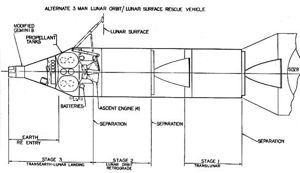Gemini Lunar Surface Rescue Spacecraft (original) (raw)

Home - Search - Browse - Alphabetic Index: 0- 1- 2- 3- 4- 5- 6- 7- 8- 9
A- B- C- D- E- F- G- H- I- J- K- L- M- N- O- P- Q- R- S- T- U- V- W- X- Y- Z
Gemini Lunar Surface Rescue Spacecraft
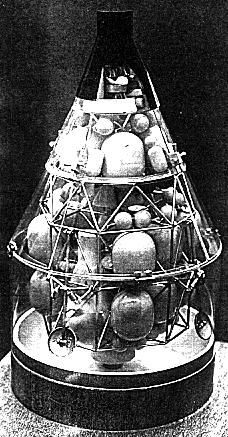
Gemini Lunar SRS
Cutaway model of the Gemini Lunar Surface Rescue Spacecraft, with landing gear in stowed position. This version of Gemini would allow a direct lunar landing mission on a single Saturn V flight. It was proposed as an Apollo rescue vehicle. A single Gemini LSSS would be landed near the planned lunar landing site before an Apollo mission. In the event of a failure of the Apollo lunar module, the Gemini LSSS would return the two Apollo astronauts on the surface directly to earth.
Credit: McDonnell Douglas
American manned lunar lander. Study 1966. This version of Gemini would allow a direct manned lunar landing mission to be undertaken in a single Saturn V flight, although it was only proposed as an Apollo rescue vehicle.
Status: Study 1966. Thrust: 88.06 kN (19,797 lbf). Gross mass: 46,000 kg (101,000 lb). Unfuelled mass: 9,600 kg (21,100 lb). Specific impulse: 311 s. Height: 12.56 m (41.20 ft). Span: 15.04 m (49.34 ft).
The unmanned spacecraft would make a landing near a stranded Apollo lunar module.
An extended Gemini reentry capsule had a passenger compartment for up to three rescued astronauts. The basic LSRS design used three modified Apollo Lunar Module descent stages for lunar orbit insertion, lunar landing, and lunar ascent.
An alternate configuration used two Apollo Service Modules and a repackaged LM descent stage. The first Service Module completed the translunar injection maneuver begun by the S-IVB stage; the second SM accomplished lunar orbit insertion and then functioned as a 'lunar crasher' stage, bringing the Gemini to just above the lunar surface. The Gemini and the third transearth-lunar landing stage would then hover to a landing near the stranded lunar module. The same final stage then boosted the Gemini capsule into a transearth trajectory.
In the wake of the Apollo fire, NASA reexamined many safety aspects of the Apollo project. The Apollo mission profile was inherently risky, and the likelihood of a crew being stranded in lunar orbit or on the lunar surface was relatively high. McDonnell returned to a concept first studied in 1962 - the use of Gemini as a Lunar Rescue Vehicle. Use of the Gemini B capsule, then in construction for use with the US Air Force's Manned Orbiting Laboratory, with various combinations of Apollo lunar module stations, would provide a rescue vehicle that could pick up Apollo astronauts stranded in lunar orbit or on the lunar surface. Three variant rescue schemes were studied, a Gemini Lunar Orbit Rescue Vehicle, a Gemini Lunar Surface Survival Shelter, and a Gemini Lunar Surface Rescue Spacecraft. McDonnell summarized the advantages of the various schemes, as contrasted with use of Apollo hardware for the same task, as follows:
- Lunar Orbit Rescue Gemini: Modified Gemini & repackaged LM Ascent Stage. Unmanned to lunar orbit, three man direct return. Advantages: Uses developed equipment. Disadvantages: New spacecraft development. Recommendation: Do not develop-rescue capability too limited. Greatest emergency potential at lunar surface.
- Lunar Orbit Rescue Apollo: Apollo CSM. Unmanned to lunar orbit, three man direct return. Advantages: No new development. Can be accomplished with current acquisitions. Disadvantages: Possibility of same failure mode. Recommendation: Do not develop-rescue capability too limited. Greatest emergency potential at lunar surface.
- Lunar Surface Survival Shelter Gemini: Vehicle Description: Modified Gemini & Modified LM Descent Stage. Mission: Unmanned to lunar surface, 28 day quiescent storage, 28 day 2-man operation. Advantages: Extension of lunar orbit vehicle. Disadvantages: New spacecraft development. Recommendation: Do not develop - need for shelter and total number of Saturn launches reduced by providing an on-station backup return capability.
- Lunar Surface Survival Shelter Apollo: Vehicle Description: Modified SM & Modified LM. Mission: Unmanned to lunar surface, 30 day manned operation. Advantages: Similar to planned post-Apollo exploration shelter. Disadvantages: Requires modifications to existing hardware. Recommendation: Do not develop - need for shelter and total number of Saturn launches reduced by providing an on-station backup return capability.
- Lunar Surface Rescue Gemini: Vehicle Description: Modified Gemini, repackaged LM Ascent Stage & Modified LM Descent Stages. Mission: Unmanned to lunar orbit, 30 day unmanned quiescent stay, 2 man direct return. Advantages: Extension of lunar orbit/shelter vehicle. No rendezvous required. Direct return. Disadvantages: New spacecraft development. Recommendation: Modify to a 'Universal' Rescue Vehicle by improving capability to cover three-man cases.
- Lunar Surface Rescue Apollo: Vehicle Description: Apollo CSM & LM. Mission: Unmanned to lunar orbit, LM to lunar surface, LM to lunar orbit, 2 man return. Advantages: No new development. Same as existing mission. Disadvantages: Rendezvous required. May be difficult to automate transpose docking. Recommendation: Modify to a 'Universal' Rescue Vehicle by improving capability to cover three-man cases. McDonnell concluded that an unmanned Gemini 'Universal Lunar Rescue Vehicle' could be developed that would perform all three tasks. The Gemini capsule would be extended to allow up to three rescued Apollo crew members to be returned. Such a craft could rescue the entire Apollo crew at any point along the Apollo mission profile. Some sketches appear to show a two-man Gemini crew in addition to three crew couches in the Gemini capsule extension. The unspoken point was that the Saturn V was in fact large enough to land men on the moon using the direct-ascent method. Use of lunar orbit rendezvous was only necessary because of NASA's adherence to the 6 metric ton, three-crew Apollo command module design. The 2 metric ton Gemini capsule, even in a form stretched to accommodate three to five crew, could accomplish a direct landing on the moon using Apollo components.
This last attempt to resuscitate Lunar Gemini failed as well. At that point in the Apollo program cut-backs already had begun. No funds would be forthcoming to build additional launch vehicles and spacecraft beyond those already purchased. There was definitely no money to provide a rescue capability, using either Apollo or Gemini hardware.
Crew Size: 3. Habitable Volume: 5.00 m3. Spacecraft delta v: 5,600 m/s (18,300 ft/sec).
Family: Lunar Landers, Moon. People: McDonnell. Country: USA. Spacecraft: Gemini LSRS AM, Gemini LSRS LM, Gemini LSRS LOIM, Gemini Lunar RM. Launch Vehicles: Saturn V. Propellants: N2O4/UDMH. Agency: NASA. Bibliography: 16, 209.
Photo Gallery
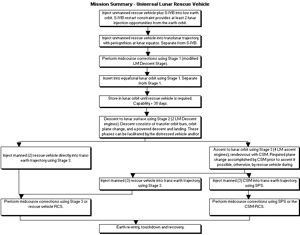 |
Gemini ULRV MissionMission Summary for Gemini Universal Lunar Rescue Vehicle.Credit: © Mark Wade |
|---|
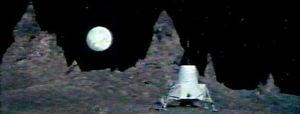 |
Lunar GeminiLunar Gemini on the moon - scene from the film 'Countdown'. |
|---|
 |
Lunar GeminiIn the Gemini cockpit, astronaut James Caan manoeuvres to the first landing on the moon - scene from the film 'Countdown'. |
|---|
 |
Lunar GeminiThe hard part - getting out of a Gemini hatch and getting onto a rope ladder to climb down to the lunar surface - a realistic scene from the film 'Countdown'. |
|---|
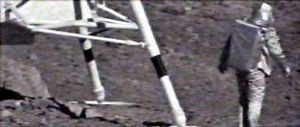 |
Lunar GeminiThe first man on the moon sets up from his lunar Gemini on the moon - scene from the film 'Countdown'. |
|---|
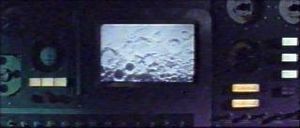 |
Lunar Gemini PanelPanel of the Lunar Gemini as portrayed in the film 'Countdown' |
|---|
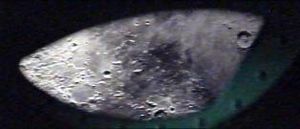 |
Lunar GeminiThe lunar surface as viewed through the Gemini cockpit windows - scene from the film 'Countdown'. |
|---|
1966 May 11 - .
- Plans for Apollo space rescue discontinued - . Nation: USA. Related Persons: Faget, Low, George. Program: Apollo. Spacecraft: Apollo Lunar Landing, Gemini Lunar Surface Rescue Spacecraft.
MSC Deputy Director George M. Low recommended to Maxime A. Faget, MSC, that, in light of Air Force and Aerospace Corp. studies on space rescue, MSC plans for a general study on space rescue be discontinued and a formal request be made to OMSF to cancel the request for proposals, which had not yet been released. As an alternative, Low suggested that MSC should cooperate with the Air Force to maximize gains from the USAF task on space rescue requirements.
Home - Search - Browse - Alphabetic Index: 0- 1- 2- 3- 4- 5- 6- 7- 8- 9
A- B- C- D- E- F- G- H- I- J- K- L- M- N- O- P- Q- R- S- T- U- V- W- X- Y- Z
© 1997-2019 Mark Wade - Contact
© / Conditions for Use


